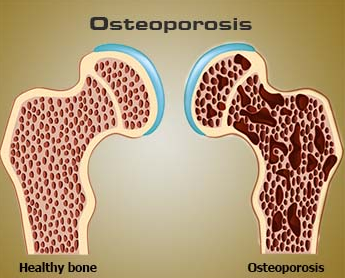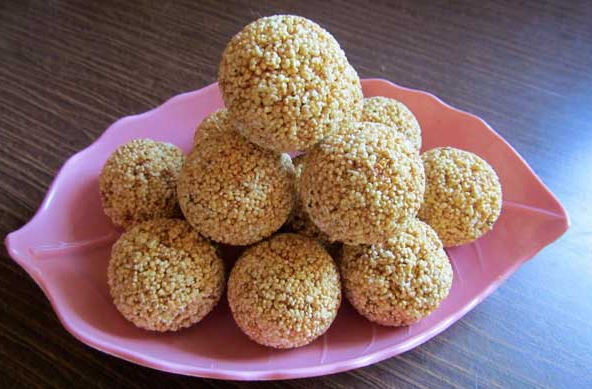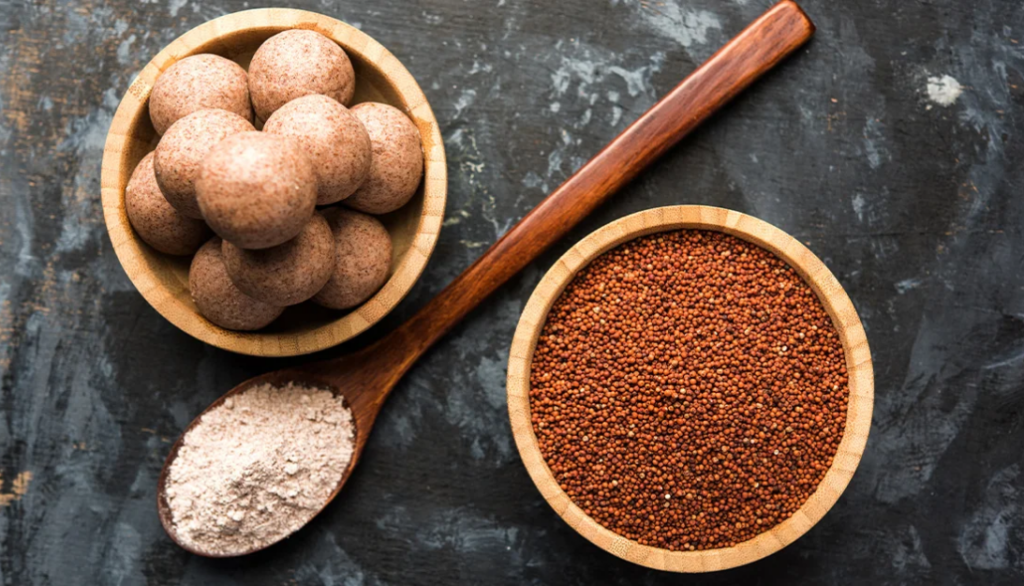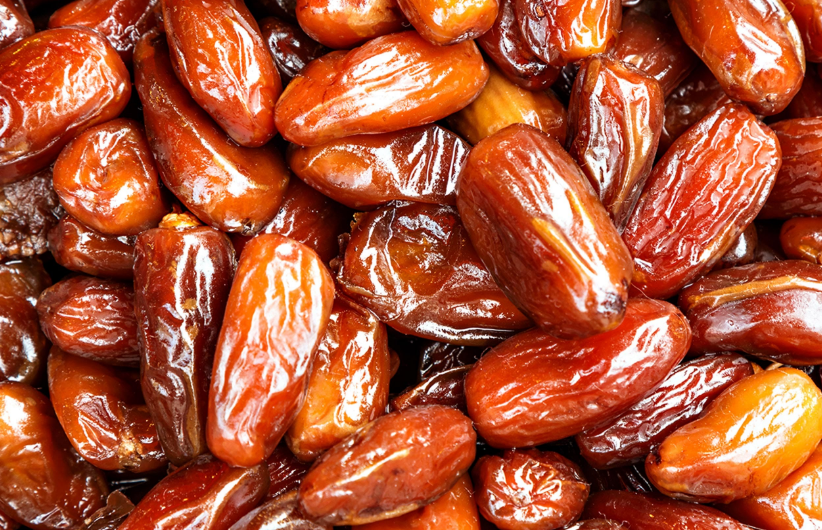
In this article, I have discussed calcium deficiency and highlighted six calcium-rich foods for those who may struggle with dairy intake due to lactose intolerance, veganism, or poor digestion. The featured foods include Rajgira (Amaranthes seeds), Til (sesame seeds), Moringa (Drumstick Tree), Ragi (finger millet), Babul gum and Dried Dates (Chuara). These alternatives provide essential calcium and other nutrients, promoting bone, muscle, and joint health.
Table of Contents
ToggleIntroduction:

Common symptoms of calcium deficiency include joint pain, weak bones, hair loss, and skin issues. Deficiency in calcium may still occur despite a good diet, necessitating supplements or targeted foods. . Calcium deficiency can occur even with a balanced diet, & calcium is vital for bones, muscles, nerves, teeth, and heart health.
Sunlight exposure is crucial for natural Vitamin D, aiding calcium absorption. It’s highly important of getting natural sunlight exposure to boost Vitamin D levels. Milk is also good source of calcium. However, some people face challenges in consuming dairy products due to lactose intolerance, indigestion, or vegan diets, making it crucial to identify alternative calcium-rich sources. Quality of milk today is often poor, making it a less reliable source of calcium. Daily calcium requirement for adults is 1000-1200 mg, higher in pregnancy, lactation, and post-menopause.
Ayurvedic Approach:

In Ayurveda, while ‘calcium’ is not directly mentioned. Ayurveda offers a natural approach to increasing calcium levels in the body, especially for those who can’t consume dairy. Ayurvedic herbs can be used to reduce pain and improve joint strength. Ayurved recommends massaging the body with sesame oil and sitting in the sunlight to improve bone health and ensure better calcium absorption. Maintaining strong joints and bones is a highly recommended for maintenance of good health. It helps to address issues like osteoporosis and osteoarthritis, which arise from calcium deficiency. This blog advocates a holistic approach to bone health, combining calcium-rich foods, Ayurvedic supplements, and regular sun exposure to prevent degeneration and support joint strength.
Rajgira (Amaranth)

Rajgira (Amaranth) is a gluten-free, calcium-rich grain that can be used to make roti, chapatti, chikki, paratha, sweet halwa, or laddus, making it a versatile option for those with gluten intolerance or who cannot digest wheat. Rajgira is also known as Ramdana or Amaranth. It can be consumed in various ways, from making flour to preparing roti, laddus, or halwa. It’s rich in protein, calcium, potassium, and fiber, making it a versatile addition to the diet.
Til (Sesame Seeds)

Til (Sesame Seeds) are one of the best plant-based sources of calcium power-house. Sesame seeds (both black and white) are introduced as a potent source of calcium, containing much more calcium than milk. They can be incorporated into meals as chutney or eaten as laddus or chikki or even mixed with spices. According to Ayurveda, It helps to reduce the body’s ‘vata’ and degeneration of bones or joint issues. The use of sesame oil for cooking or massages is also recommended, particularly for joint pain and overall bone health. Til (Sesame Seeds) are commonly consumed in winter in form of laddus with ghee and dry fruits.
Ragi (Finger millet)

Ragi (finger millet) is a light, satisfying food that provides calcium and energy without causing weight gain. It can be used in roti, porridge, or laddus. Calcium deficiency can manifest as joint pain, muscle cramps, hair loss, dry skin, and dental problems. Regular intake of calcium-rich foods is crucial to address these symptoms. Ragi (Finger Millet) is a highly nutritious grain that is easy to digest and beneficial for children, adults, and elderly people. It maintains energy levels without contributing to weight gain. Ragi can be consumed as laddus, roti, chapati, cheela (savory pancakes), or porridge, and is a good source of calcium as well as hemoglobin. Ragi (Finger Millet) is a calcium-rich and digestive-friendly grain that helps to sustain energy and improves better calcium absorption. Ragi is particularly recommended for dinner due to its lightness on the stomach.
Babool gum/Dink (Acacia)

Babool gum/Dink (Acacia) helps to strengthen joints, improve bone density, and promote lubrication in the body, particularly useful for those with fractures or joint pain.It is a traditional remedy for bone and Joint health. Babool gum is known for its lubricating properties and ability to help heal fractures & recommended for its strengthening effects on bones and joints. Babool Gum can be consumed traditionally by making laddus in the winter when joint pain is more prevalent.
Moringa (Drumstick Tree)

Moringa (Drumstick Tree) is considered a superfood and is incredibly rich in calcium, containing about four times the calcium of milk. Ayurveda considers moringa as one of the greatest foods to promote overall wellness, improve bone strength, and enhance immunity. Moringa leaves can be consumed fresh, dried as powder, or in capsules. It can be added to vegetables, curries, soups, or used in herbal teas. It helps to alleviate joint pain, stiffness, and support overall joint health. It promotes joint lubrication and helps heal fractures. It should be cautiously used in warm weather (In May or October Month) due to its heat-increasing nature.
Dried dates (Chhuara)

Dried dates (Chhuara) are an excellent source of calcium and energy,especially beneficial for children and can be used in various dishes like halwa or laddus. Chhuhara (dried dates) is known as sweet source of calcium that is presented as a convenient and sweet way to boost calcium intake, especially for children. Chhuhara can be consumed in various ways such as mixing its powder in milk or using it in sweet dishes like halwa. Chhuhara is recommended as an easy snack for children and adults alike, helping improve bone strength and overall health.
Conclusion:
By understanding importance of above calcium resources, we need to include calcium-rich foods in our daily diet for betterment of our health, especially for vegetarians. We need to inculcate wisdom of Ayurved for a healthier lifestyle in our daily routine. Ayurveda recommends natural sources of calcium through diet and suggests using supplements or oils, to manage joint pain and improve joint health. Calcium deficiency refers to the lack of sufficient calcium in the body, which is essential for strong bones, muscles, nerves, teeth, and heart health. Calcium-rich Foods.
Q & A

What is the significance of calcium for the human body?
Calcium is essential for maintaining the health of bones, muscles, nerves, teeth, and the heart. It plays a crucial role in overall health and well-being.
Why might some people have calcium deficiency despite eating a healthy diet?
Some people might experience calcium deficiency due to various factors such as lactose intolerance, difficulty digesting milk, veganism, or the unavailability of good-quality dairy products.
What is Rajgira, and how is it beneficial as a calcium-rich food?
Rajgira, also known as amaranth, is gluten-free and rich in calcium, protein, potassium, phosphorus, and dietary fibers. It is a great option for people with gluten intolerance and can be consumed in various forms like grains, flour, or sweets like laddoos and chikkis.
How does sesame (til) compare to milk in terms of calcium content?
100 grams of sesame seeds contain 975 mg of calcium, which is significantly higher than the 125 mg of calcium found in 100 ml of milk, making sesame an excellent non-dairy source of calcium.
What are some ways to include sesame in the daily diet?
Sesame can be consumed in various ways, such as roasted sesame chutney, sesame mixed with spices, sesame-based sweets like laddoos and chikkis, or sesame oil for cooking or massage.
How can Ragi (finger millet) help in meeting calcium requirements?
Ragi is a light, calcium-rich grain that is easily digestible and suitable for people of all ages. It helps in maintaining energy levels without causing weight gain. It can be consumed as roti, porridge, or cheela, and is also good for boosting hemoglobin levels.
What are some common signs of calcium deficiency?
Common signs of calcium deficiency include joint pain, back pain, weak bones, muscle cramps, hair loss, dry skin, dental issues, low energy, fatigue, and sleep-related problems.
Why is it important to get natural calcium from food rather than relying solely on supplements?
Calcium supplements can have side effects such as constipation or an increased risk of kidney stones. Therefore, it is important to get calcium from natural food sources to avoid these issues and maintain overall health.
How does Babul gum (Acacia gum) contribute to bone and joint health?
Babul gum is beneficial for bone and joint health as it helps lubricate joints, strengthens bones, and is traditionally used in making laddoos to relieve joint pain, especially during winter.

Very informative 👍🏼